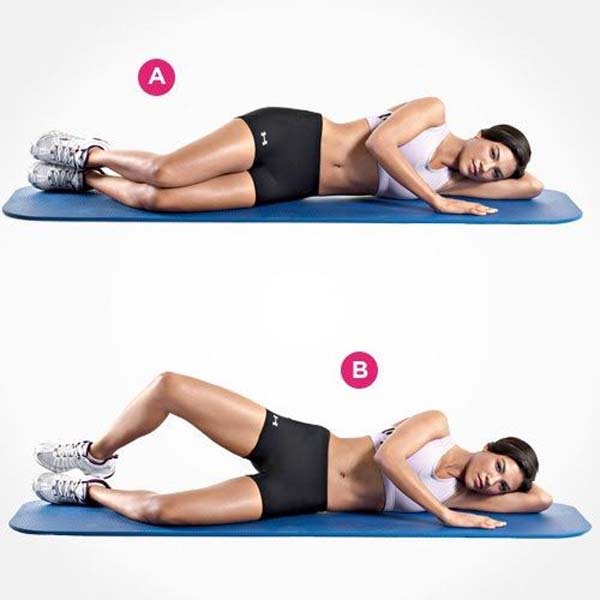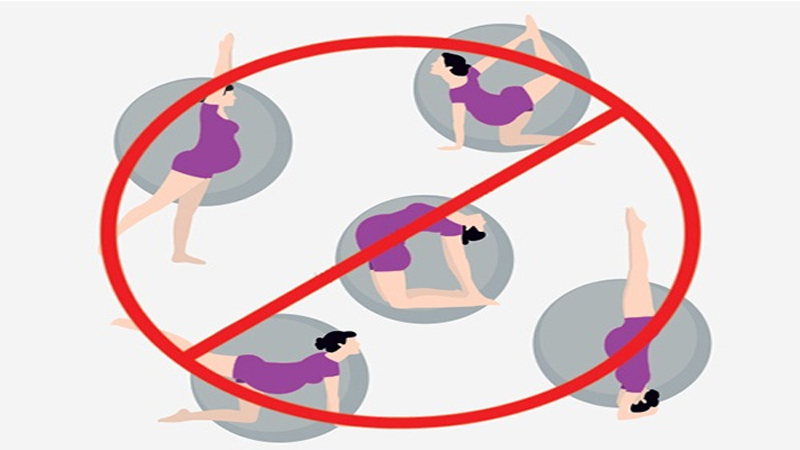Every pregnant lady during her pregnancy wishes for a safe and healthy delivery of the baby. This can be achieved by staying healthy physically and mentally, positive, and energetic throughout the pregnancy. For this, doctors suggest the expectant mothers do antenatal exercises regularly. Doing these antenatal exercises regularly will improve the posture, decrease the common discomforts such as backaches, fatigue, etc. Studies have proved that gentle exercising regularly during pregnancy can prevent gestational diabetes, high blood pressure. Moreover, doing antenatal exercises regularly will increase the stamina that is required for labor and delivery. A word of caution given by doctors is that over-exercising can harm the pregnant woman and the baby inside; sometimes, it may even lead to miscarriage and fetal death.
What is Antenatal Exercise?
The word “natal” means delivery, antenatal means before birth, or it can also be said as during pregnancy. This can also be termed as prenatal. The exercises that are performed during pregnancy or before delivery of the baby are called antenatal exercises.
A series of physical exercises that are performed by the expectant mother to bring about optimal functioning of all systems and prevent complications are antenatal exercises.
Purpose of Antenatal Workout:
Exercising during pregnancy is beneficial for the pregnant lady and the baby present inside. The primary purpose or aim of antenatal exercising is to prevent discomfort such as cramps, hip pain, joint pains, lower back pain, rib pain, fatigue, morning sickness. During pregnancy, the pregnant lady gains more weight than usual. Antenatal exercises can prevent overweight, gestational diabetes, and even high blood pressure. The main purpose of antenatal exercises is to put the expectant mother healthy mentally, physically, and psychologically.
See More: Exercise Benefits & Risks During Pregnancy
Types of Antenatal Exercises:
The different types of antenatal exercises that can be performed are
A. Yoga:
Yoga is considered one of the safest forms of exercise that can be performed antenatally. Different stretching exercises can give relief to back pain, rib pain, hip, and joints pain that is commonly experienced during pregnancy. Apart from this, meditation can keep the pregnant lady mentally healthy.
B. Aerobics:
Low impact aerobics have to be performed during pregnancy. These aerobics benefit in strengthening the lungs and heart, maintain balance and muscle tone, reduce the stress on the joints. Aerobics have to performed only in the presence of an instructor. A small lapse during exercising can lead to severe health complications.
C. Pelvic Floor Exercises:
The Pelvic floor exercises, also called Kegels, are suitable for strengthening the pelvic muscles. This helps in the safe and secure movement of the baby during delivery.
D. Swimming:
Swimming is considered as one of the safest antenatal exercises. The benefits of swimming include relief from morning sickness, various joint pains. Swimming also enhances sleep during the nights. One important thing during pregnancy is that there should be continuous blood flow to the fetus, swimming can ensure a constant blood flow throughout the pregnancy.
E. Brisk walking and Cycling:
These are considered as the basic antenatal exercises. Brisk walking provides a cardiovascular workout, while cycling help in reducing the ankle and joint pains that will appear during pregnancy.
10 Best Antenatal Exercises List to Perform:
Listed down are some of the best antenatal exercises that you can perform. It is said that it is never too early to start doing Kegels, but the earlier and regular you perform, the greater the benefits during pregnancy.
1. Breathing Exercises:
There are three types of breathing exercises
A. Abdominal Breathing:
How to Perform:
- Breathe in through the nose and feel the expansion of the abdomen.
- Now, slowly breathe out through the mouth.
Benefits:
- This exercise can relieve mild pain during labor.
B. Lower Costal Breathing:
How to Perform:
- Place your hands on the lower rib cage and breathe in through the nose and feel the expansion of the chest.
- Now, gently exhale through the mouth.
Benefits:
- This exercise can relieve medium pain during labor.
C. Apical Breathing:
How to Perform:
- Cross your hands below the clavicles with the mouth slightly open.
- Inhale through nose and mouth.
- Now, exhale gently as if trying to flicker the flame of the candle flame without blowing it out. You can feel the upper lungs moving slightly up and down.
- During contractions, try to relax and control the breathing.
Benefits:
- This exercise is suitable during labor with severe pain.
2. Ankle Exercises:
How to Perform:
- Sit on the chair with your back against the seatback.
- Start with one ankle and turn the foot upwards and downwards. Repeat this process ten times.
- Do the same activity with the other leg.
Benefits:
- This exercise helps in reducing the leg swelling and varicose veins, thus alleviating the suffering of leg cramps.
3. Back and Abdominal Exercise:
How to Perform:
- Sit on the chair with your back against the seatback and breathe naturally.
- Now, tighten the abdomen and press the pelvis downwards to flatten your lower back against the seatback. Hold to this position for 5 seconds and then relax.
Benefits:
- This exercise helps in reducing the lower back pain and strengthens the abdominal muscles.
- Helps in correcting the posture of the pelvis and lower back.
4. Lower Limbs Relaxation Exercise:
How to Perform:
- Sit on a stable low chair against the wall and slowly spread your thighs sideways and hold on to the position for 10 seconds and relax.
- Redo the process for ten times of 3 sets.
Benefits:
- This exercise enhances the strength and flexibility of pelvic muscles and inner thighs.
- It helps you get accustomed to the delivery position and prevent thigh spasm during delivery.
- This exercise is suitable only for pregnant women who have tight thighs. This is not suitable for women having pain over the pubic bones.
5. Pelvic Floor Exercises:
How to Perform:
- Sit on a chair with the back against the wall.
- Now, inhale deeply and tighten the pelvic muscle, i.e., vaginal, urethral, and anal tissue and hold for 10 seconds.
- Release the muscles by exhaling. Take a rest for 60 seconds and repeat the process.
- The tricky part of performing this exercise is to find the pelvic muscles. This can be found by withholding the urination or defecation. The muscle that helps in withholding the urine is the pelvis muscle.
Benefits:
- This exercise enhances the support and control of pelvic floor muscles.
- This exercise helps you prepare for childbirth and prevents urinary incontinence, hemorrhoid, and uterine prolapse.
6. Walking:
How to Perform:
- This is the basic and self-explanatory exercise that can be performed. This exercise doesn’t need much of the introduction and explanation.
- Wear comfortable shoes and go on for a morning walk for 30 minutes.
Benefits:
- This is an excellent cardiovascular exercise that is performed. This exercise doesn’t put much pressure on the ankle and knees.
See More: Benefits of Walking During Pregnancy
7. Swimming:
How to Perform:
- This exercise doesn’t need much of an explanation.
- Go to a swimming pool and start swimming slowly by beating gentle strokes.
- Wear a comfortable swimsuit and perform freestyle swimming for 20-30 minutes.
Benefits:
- Swimming helps in relieving joint pains, lower back pain during pregnancy.
- Swimming also promotes good sleep and a calm mind during pregnancy.
8. Pilates:
How to Perform:
- Lie on the mat with your forehead facing the ground and feet together.
- Now raise your chest and head slightly and extend the arms perpendicular to the body and the palms facing downwards.
- Lift your body and hold on for 120 seconds.
- Come back to normal position and relax for 5 minutes.
- Do three sets of pilates every day.
Benefits:
- Pilates strengthens the muscle and body balance. This exercise improves flexibility, body balance, and blood circulation in the body.
9. Pelvic Tilt Exercises:
- Stand on the ground with shoulders and bottom against the wall.
- By keeping the knees soft, pull the tummy button towards the spine so that the back flattens against the wall.
- Hold to this position for 5 seconds, release and repeat the process ten times.
Benefits:
- This exercise helps in strengthening and toning the pelvic muscles.
- This helps in easy and safe vaginal delivery of the baby.
10. Squatting:
How to Perform:
- Stand straight, feet slightly wide open, and toes pointed out.
- Bend your knees and push your hips down as if you are sitting on the chair.
- Dropdown until your thighs are parallel to the ground, and knees bowed slightly outward.
- Make sure that you don’t lean forward while doing this exercise.
- Come back to the original position and continue doing 20 reps.
Benefits:
- This exercise strengthens the hip, thigh, and pelvic muscles. Pregnant women get relief from the lower back pain, hip pain, and certain joint pains that are caused during pregnancy.
Tips and Precautions:
Some of the tips that can be followed while performing antenatal exercises are
- Choose loose fittings, comfortable clothing with the right support bra.
- Always exercise with comfortable shoes.
- As far as possible exercise on flat grounds, avoid undulated land while exercising.
- For swimming, wear a loose and comfortable swimsuit.
- Always carry a water bottle while exercising to keep yourselves hydrated all the time.
- Try compression stocking if you have swollen legs.
- Stop exercising if you feel severe pains in the joints if you feel dizziness.
- Take a proper diet and extra calories if you plan to exercise daily. This will meet your daily requirement.
- After performing floor exercises, get up gently and gradually to avoid dizziness.
- Consult your doctor for advice before planning to exercise regularly.
When to Stop Antenatal Exercises:
Regular exercise is very beneficial to the pregnant lady. But, sometimes it may affect the health of the pregnant lady and the baby if over-exercised. There will always be a limiting point to it. Hence the expecting mother needs to stop exercising if she experiences any of the following symptoms.
- Weakness and fatigue
- Nausea, dizziness, or faintness
- Pain in the stomach or chest or pelvic area
- Muscle cramps
- Sudden swelling in ankles, joints
- Shortness of breath
- Rapid or irregular heartbeat
- Vaginal bleeding
- Leakage of amniotic fluid
- Reduction in baby’s movements
Antenatal exercises are exercises that are performed before delivery. Performing these exercises are quite safe and very beneficial for the expecting mother and the baby present inside the womb. There are a lot of antenatal exercises that can be performed but choose only those exercises that you are capable of performing. Do the exercises in a safe and healthy environment duly following the tips mentioned above and precautions. It is better to consult your doctor before planning to do antenatal exercises.
See More: Top Kegel Exercises During Pregnancy
Frequently Asked Questions And Answers:
Q1. When to Start Antenatal Exercises?
Ans: Antenatal exercises can be started right from the day of conception. For the growing fetus to be healthy, it is essential to exercise regularly. But, if there are any complications during the early stages, it is better to avoid physical exercise during the first trimester.
Q2. Who Should Not Exercise?
Ans: Pregnant women who have medical ailments like asthma, heart disease, Type1 diabetes are advised not to do these exercises. Also, if you have a weak cervix or if you experience bleeding or spotting, avoid physical exercising.
Q3. How Soon Can I Exercise After Delivery?
Ans: It is recommended to start exercising after 2-3 weeks of vaginal delivery. Perform only low impact floor exercises during this period. However, take the advice of your medical practitioner before planning to exercise after childbirth.
Disclaimer: The opinions expressed in this article are just suggestions, and the website is no way responsible for the side effects it may cause. It is better to consult a doctor before you plan anything, especially when you are pregnant.


















































